The most ruthless child killers in history
Categories: Children | History
By Pictolic https://pictolic.com/article/the-most-ruthless-child-killers-in-history.htmlThe mention of murderers makes one's blood run cold, but the scariest thing is when these murderers are children. It doesn't even fit into my head that a child can be capable of murder, and even such cruel ones. Here are stories about bloodthirsty murderers in the face of children, causing panic terror.
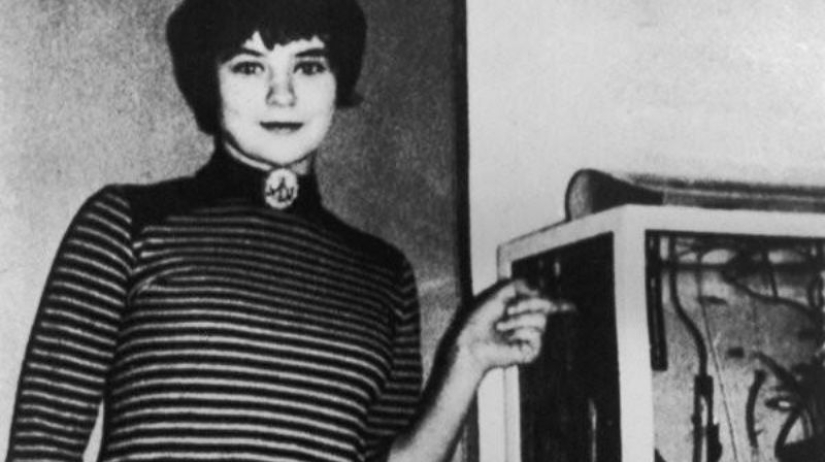
Mary Bell is one of the most "famous" girls in the history of Great Britain. In 1968, at the age of 11, together with her 13-year-old girlfriend Norma, with a break of two months, she strangled two boys, 4 and 3 years old. Brian Howe (3 years old) was found dead under a mountain of weeds and grass just a few days after the death of Martin Brown (4 years old). His hair was cut short, injection marks were found on his thighs, and his genitals were partially cut off. In addition to these injuries, there was a mark in the form of the letter "M" on his stomach. When the investigation came to Mary Bell, she gave herself away, describing in detail a pair of broken scissors, which, according to the girl, Brian was playing with. The scissors became irrefutable proof of Mary's guilt.
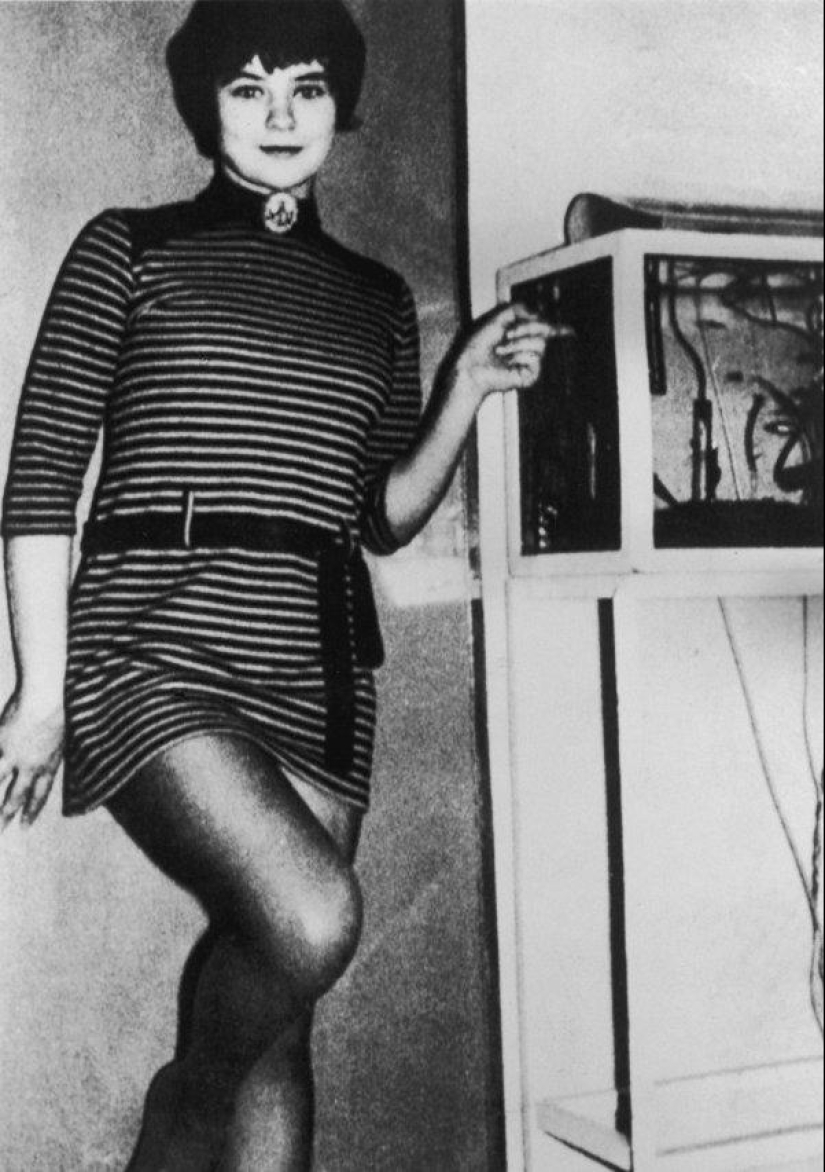
Family background may have influenced Mary's unusual behavior. For a long time she thought she was the daughter of a common criminal, Billy Bell, but to this day her real biological father is unknown. Mary claimed that her mother Betty, who was a prostitute, forced her to engage in sexual acts with men — especially with her mother's clients — from the age of 4.
The trial was over, but according to the law, Mary could not be sentenced to prison because of her underage age. The investigation concluded that Mary's stay in a psychiatric hospital or boarding school for difficult teenagers is also fraught with risk. Therefore, until she came of age, she was kept in a special shelter for antisocial children, and then in a prison with minimal supervision "Mur-Kurt". During the trial, the mother repeatedly sold Mary's story to the press. The girl was only 11 years old, she was released only after 23 years. Now she lives under a different name and surname. This case is well known as the "Mary Bell Case".
John Venables and Robert Thompson were sentenced to life imprisonment, despite the fact that they were only ten years old at the time of the murder. Their crime caused shock throughout Britain. On February 12, 1993, the mother of two-year-old James Bulger left her son at the door of the butcher shop, thinking that returning back would not take her much time, since there was no queue at the store. She did not think that she would see her son for the last time…
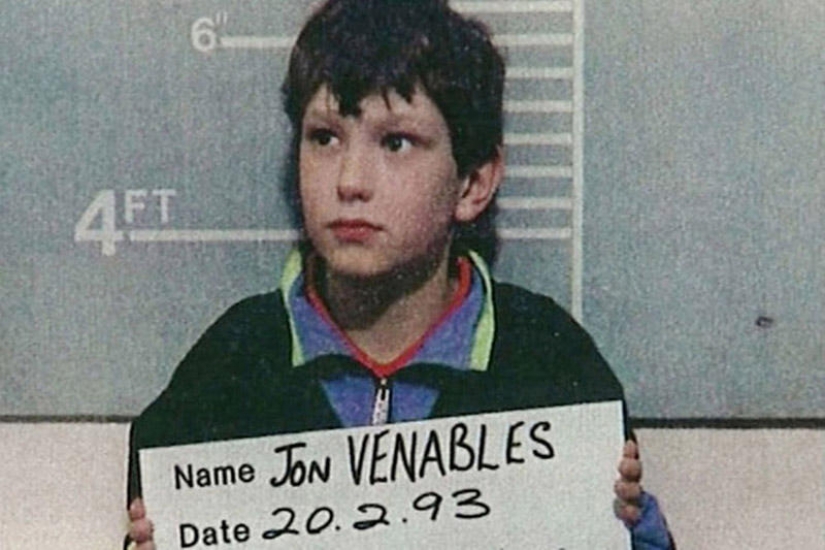
John and Robert were at the same store, doing their usual things: robbing people, stealing from stores, appropriating things when the sellers turned their backs on them, climbing on chairs in restaurants until they were kicked out. The guys had the idea to kidnap the boy, then to arrange everything as if he was lost. (Pictured by John Venables)
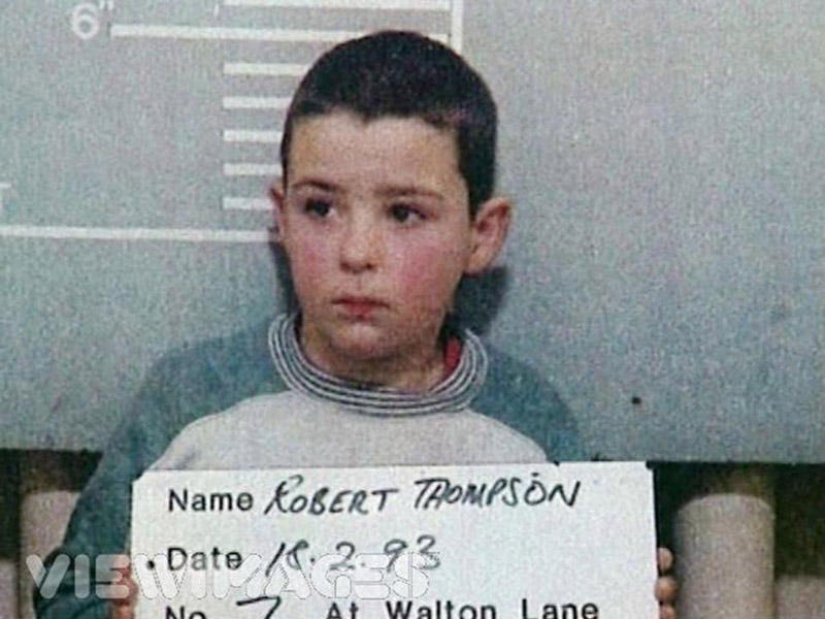
John and Robert forcibly dragged the boy to the railway, where they threw paint at him, brutally beat him with sticks, bricks and an iron rod, threw stones, and sexually abused the little boy, and then put his body on the railway tracks, hoping that the baby would be run over by a train and his death would be mistaken for an accident. James' body was found, but the forensic examination showed that the boy died before he was run over by a train. (Pictured by Robert Thompson)
A 15-year-old girl killed her younger neighbor and hid the corpse. Alice Bustamant planned the murder, choosing the right time, and on October 21 she attacked a neighbor girl, began to strangle her, cut her throat and stabbed her.

The police sergeant who interrogated the juvenile killer after the disappearance of 9-year-old Elizabeth, said that Bustamant confessed where she hid the body of the murdered fourth-grader, and took the police to the forest where the corpse was. She said she wanted to know how the killers felt.
On June 16, 1944, a record was set in the United States — George Stinney, who was 14 years old, became the youngest person executed in the United States. George was convicted of the murder of two girls — eleven-year-old Betty June Binnicker and eight-year-old Mary Emma Thames, whose bodies were found in a ravine. The girls had severe skull injuries resulting from blows with a rail crutch, which was later found.
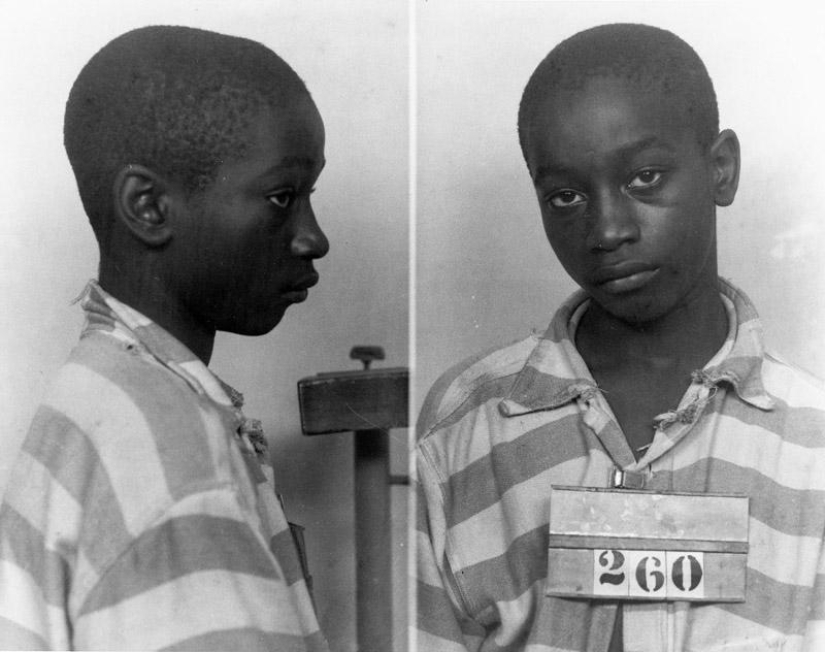
George confessed to the crime, and also that he initially tried to have sex with Betty, but in the end it turned into murder. George was charged with first-degree murder, found guilty, and was sentenced to death by electric chair. The sentence was carried out in South Carolina and overturned in 2014, 70 years after the execution.
On May 20, 1998, Kinkel was expelled from school for trying to buy stolen weapons from a classmate. He confessed to what he had done, and he was released from the police. At home, his father told him that he would have been sent to boarding school if he had not started cooperating with the police. At 15:30, Kip pulled out his rifle hidden in his parents' room, loaded it, went into the kitchen and shot his father. At 18:00, the mother returned. Kinkel told her he loved her and shot her—twice in the back of the head, three times in the face and once in the heart. Later he claimed that he wanted to protect his parents from the difficulties they might have because of his problems with the law.
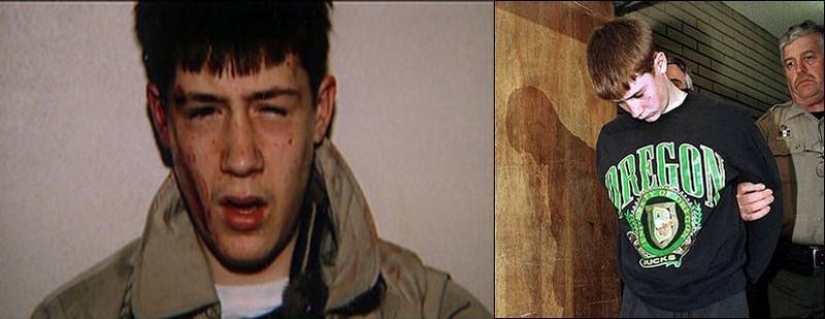
On May 21, 1998, Kinkel arrived at school in his mother's Ford. He put on a long waterproof coat to hide his weapons: a hunting knife, a rifle and two pistols, as well as ammunition. He killed two students and injured 24. When he was reloading the gun, several students managed to disarm him. In November 1999, Kinkel was sentenced to 111 years in prison without the possibility of early release. During the announcement of the verdict, Kinkel apologized to the court for the murders of his parents and school students.
In 1983, Cindy Collier and Shirley Wolfe began looking for victims for their entertainment. Usually it was vandalism or car theft, but one day the girls showed how crazy they really were. They knocked on the door of an unfamiliar house, and an elderly woman opened it for them.

After seeing two young girls of 14-15 years old, the old lady did not hesitate to let them into the house, hoping for an interesting conversation over a cup of tea, and she got it — the girls chatted with the sweet old lady for a long time, entertaining her with interesting stories. Then Shirley grabbed the old lady by the neck and held her, and Cindy went to the kitchen for a knife. Grabbing a knife, Shirley inflicted 28 stab wounds on the old woman. The girls fled the scene of the crime, but were soon arrested.
On February 2, 1996, a shooting and hostage-taking incident occurred at Frontier Public High School in Washington State. Barry Lukatis put on his cowboy suit and went to the algebra classroom where his class was supposed to have a lesson. Most classmates found Barry's costume funny, and Barry's behavior a little strange. They didn't know what the suit was hiding, and there were two pistols, a rifle and 78 rounds of ammunition. He opened fire, his first victim was 14-year-old Manuel Vela. A few seconds later, his victims were a teacher and another classmate. The students were held hostage for 10 minutes until the school physical education teacher managed to disarm the boy.
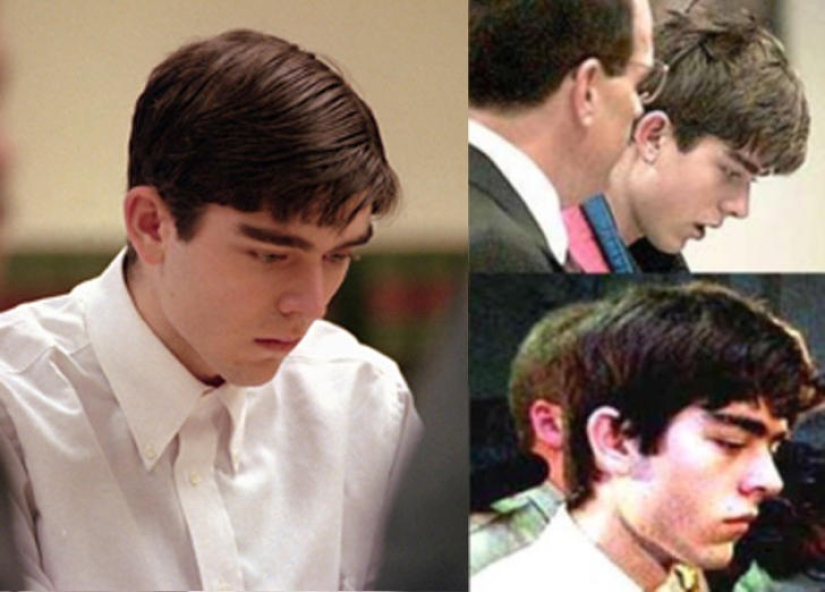
It was also reported that he was shouting: "It's more interesting than talking about algebra, isn't it?" is a quote from Stephen King's novel "Rage", in which the main character kills two teachers and takes a class hostage. Barry is currently serving two life sentences with a further 205 years.
On November 3, 1998, when Joshua Phillips was 14, his neighbor went missing. One morning Joshua's mother was cleaning his room and found a wet spot under his son's waterbed. Trying to find a leak, she noticed that the mattress was glued with duct tape. Inside the mattress, Mrs. Phillips found the body of a missing 8-year-old neighbor named Maddy Clifton, whom the whole city had been searching for for seven days.
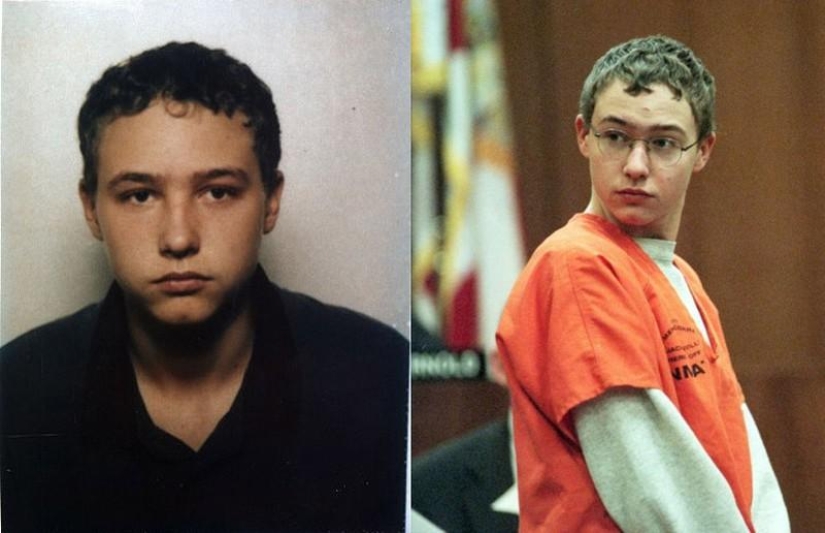
To this day, Phillips has not voiced a motive for the murder. He said that he accidentally hit the girl on the head with a baseball bat, she started screaming, he panicked, and then dragged her into his room and began to beat her until she was silent. The jury didn't believe his story, he was charged with first-degree murder. Since Joshua had not reached the age of 16, he avoided the death penalty. But he was given life without parole.
Wili Bosket's track record by the age of 15, in 1978, by his own admission, there were already more than 2,000 crimes in New York. He did not know his father, but he claimed that his father was convicted of murder, and considered it a "courageous" crime. At that time, in the United States, according to the Criminal Code for Minors, criminal liability was not provided for, so Bosket boldly walked the streets with a knife or a pistol in his pocket. On March 19, 1978, he shot Moises Perez, and on March 27, the namesake of the first victim, Noel Perez.

Ironically, the Willy Bosket case has become a precedent for the revision of the provision on the absence of criminal liability for minors. According to the new law, children from the age of 13 can be tried as adults for excessive cruelty.
At the age of 13, Eric Smith was the object of bullying because of his glasses with thick lenses, freckles, long red hair and another feature: protruding elongated ears. This feature is a side effect of the epilepsy medication that his mother took during pregnancy. Smith was accused of murdering a four-year-old named Derrick Robbie. On August 2, 1993, the baby was strangled, his head was pierced by a large stone, and plus the child was raped with a small branch.
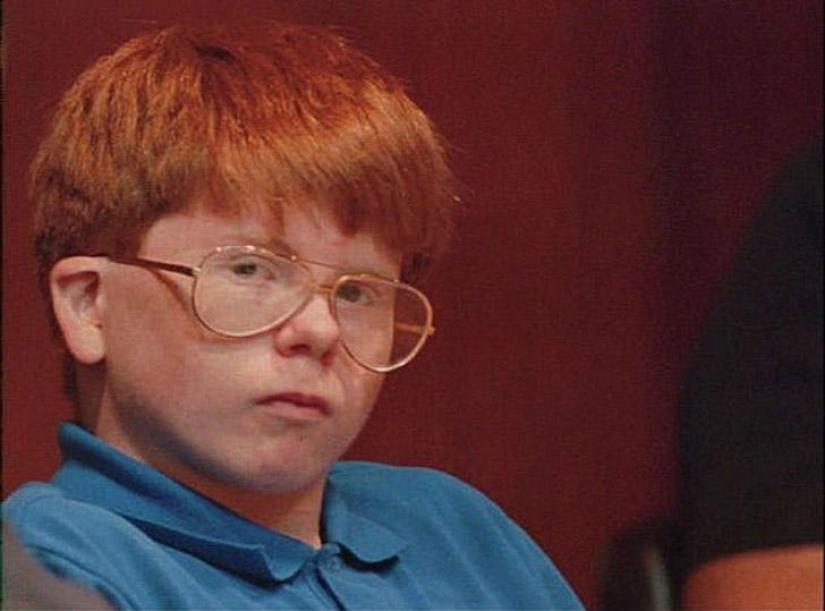
The psychiatrist diagnosed an emotionally unstable personality disorder, because of which a person cannot control his inner anger. Smith was convicted and sent to prison. During his six years in prison, he was refused parole five times.
Who would have thought that constant watching of wrestling competitions could lead to the murder of a six-year-old girl named Tiffany Onik. Kathleen Grosset-Tate was Tiffany's babysitter. One evening, Kathleen left the baby with her son, who was watching TV, while she went upstairs. At about ten o'clock in the evening, she shouted at the children to be quiet, but she did not go downstairs, thinking that the children were playing. Forty-five minutes later Lionel called his mother, informing her that Tiffany was not breathing. He explained that he struggled with the girl, making a grab, and then hit her head on the table.
Later, the pathologist concluded that the girl's death was caused by a ruptured liver. In addition, experts testified fractures of the skull and ribs, as well as 35 other injuries. Later, Tate changed his testimony and said that he jumped on the girl from the stairs. He was sentenced to life without parole, but in 2001 his sentence was revised due to the mental incapacity of the prisoner. He was released in 2004 with a probation period of ten years.
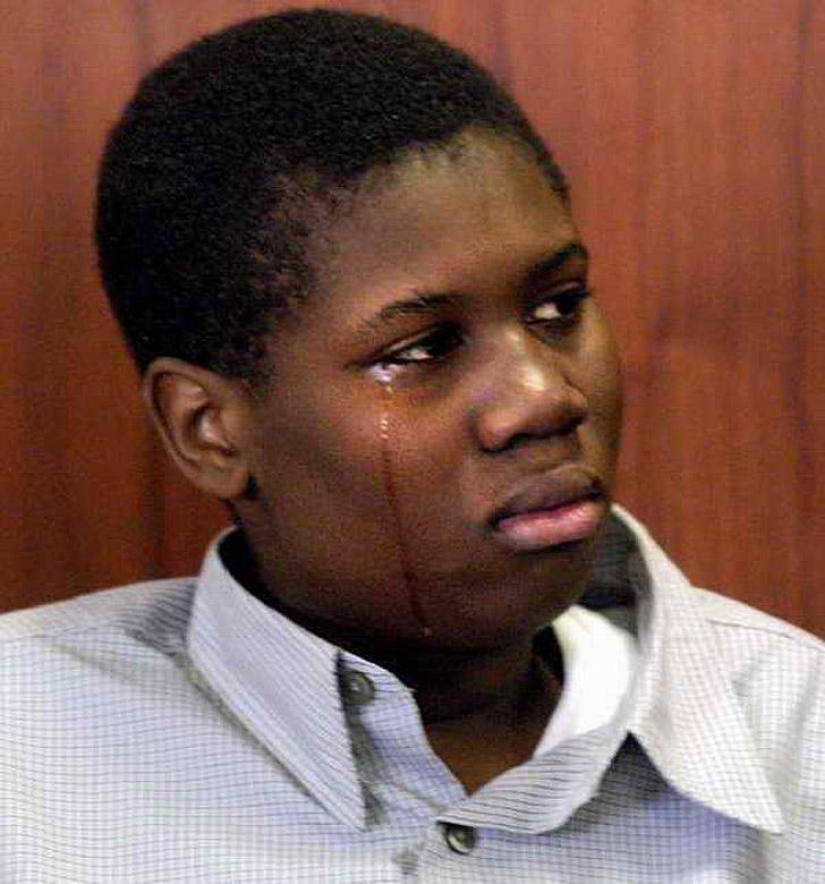
39-year-old Joan Heaton with her two daughters, 10-year-old Jennifer and 8-year-old Melissa, were found dead in their home on September 4, 1989. Police said Joan had approximately 60 stab wounds, while the girls had approximately 30 each. The knife blows were so strong that the blade of the knife broke and stuck in Melissa's body. The authorities believed that theft was the main motive of the crime, and the suspect, when he was noticed, grabbed a kitchen knife and inflicted these wounds in a state of passion. It was also believed that the robber had to be someone from the area, and he must have a wound on his arm.
Craig Price was caught by police on the same day with his arm bandaged, but said he had smashed a car window. The police didn't believe his story. They searched his room, finding a knife, gloves and other evidence there. He also confessed to another murder that had been committed in the neighborhood two years earlier. The authorities suspected him of the case, which also began with theft, and ended like the Hitons case. Craig was given a life sentence the day before he turned sixteen.
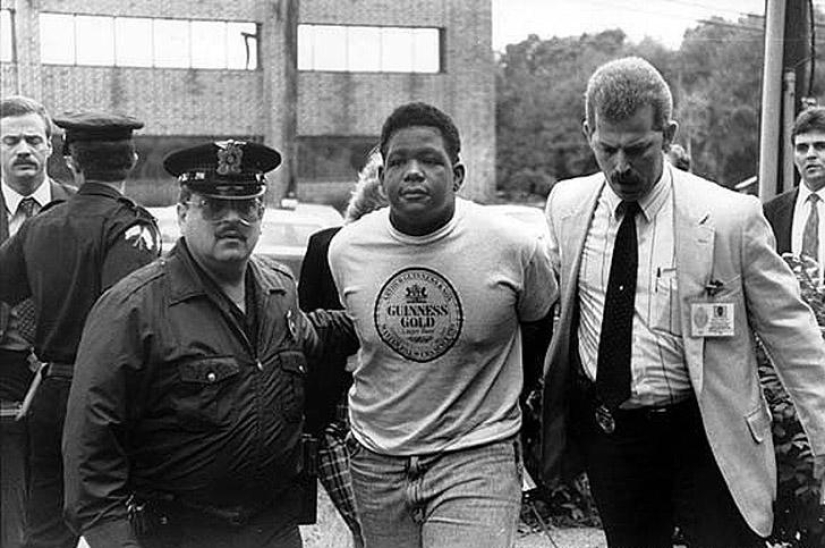
James Pomeroy, born in November 1859 in Charleston, Massachusetts, is mentioned as the youngest person found guilty of first-degree murder in the history of the state. Pomeroy began his violent actions towards other children at the age of 11. He lured seven children to deserted places, where he undressed them, tied them up and tortured them using a knife or poking pins into their bodies. He was caught and sent to a reform school, where he was supposed to stay until he turned 21. But a year and a half later he was released for exemplary behavior. (Pictured on the right is Jesse Pomeroy in 1925)Three years later, he changed from a bad guy to a monster.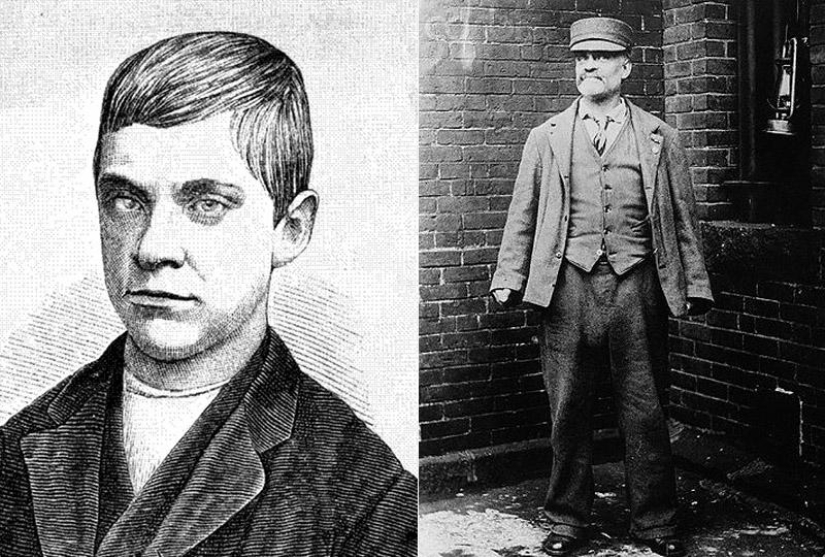
He kidnapped and killed a 10-year-old girl named Katie Curran, and was also charged with the murder of a 4-year-old boy whose mutilated body was found in Dorchester Bay. Despite the lack of evidence in the boy's murder, he was found guilty of Katie's death. The body was lying in a pile of ashes in the basement of Pomeroy's mother's store. Jesse was sentenced to life in solitary confinement, where he died of natural causes at the age of 72.
Recent articles

Leonardo da Vinci was accused of being fond of orgies. William the Conqueror, despite all his successes, was called a "Bastard" ...

Modesty? Decency? A sense of tact? No, you haven't heard! Just look at what the people from the selection below are doing! No ...

American documentary photographer Bruce Davidson came to the UK in 1960 for a couple of months on the assignment of Queen magazine. ...